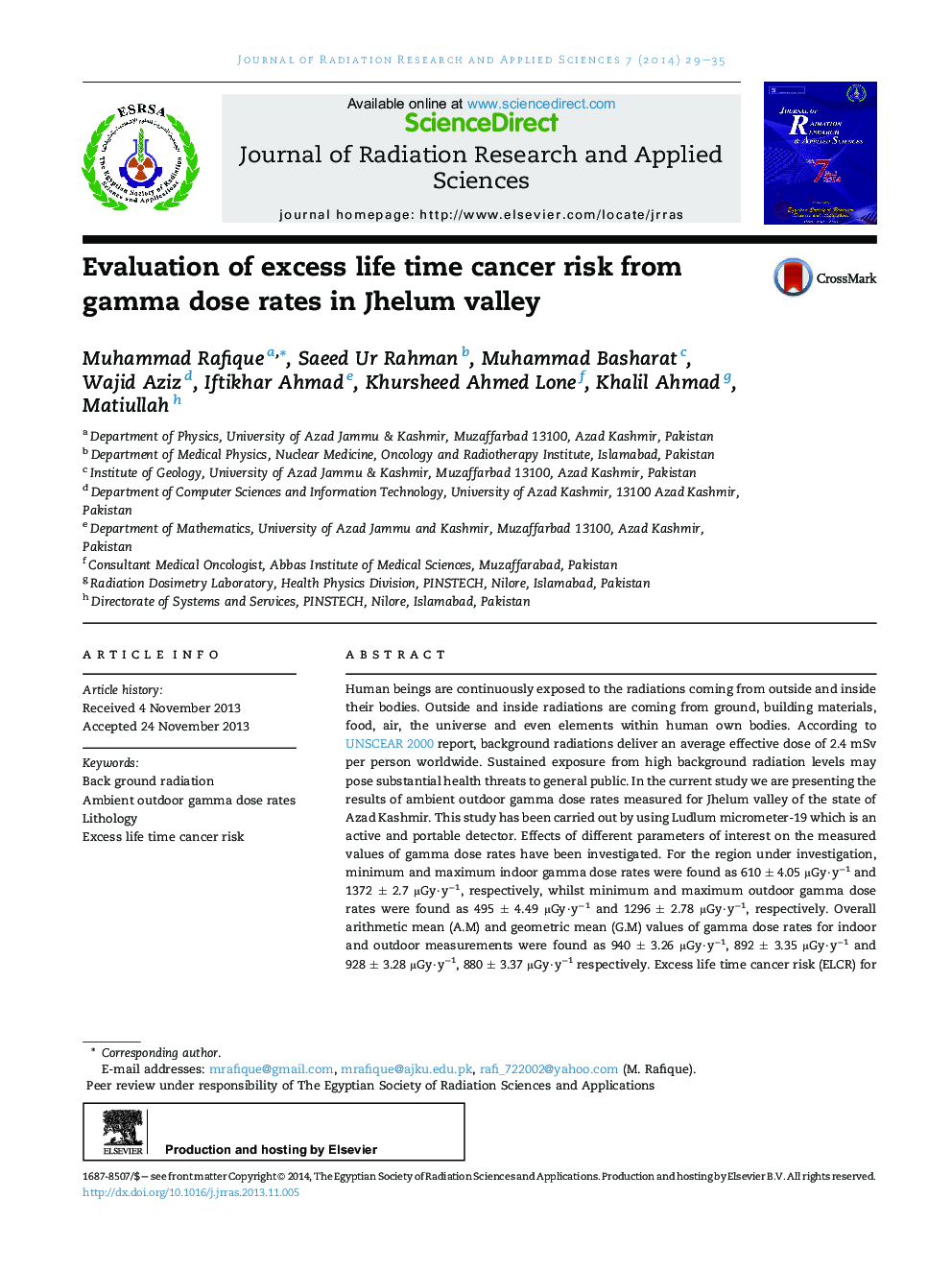| Article ID | Journal | Published Year | Pages | File Type |
|---|---|---|---|---|
| 1570283 | Journal of Radiation Research and Applied Sciences | 2014 | 7 Pages |
Abstract
Human beings are continuously exposed to the radiations coming from outside and inside their bodies. Outside and inside radiations are coming from ground, building materials, food, air, the universe and even elements within human own bodies. According to UNSCEAR 2000 report, background radiations deliver an average effective dose of 2.4 mSv per person worldwide. Sustained exposure from high background radiation levels may pose substantial health threats to general public. In the current study we are presenting the results of ambient outdoor gamma dose rates measured for Jhelum valley of the state of Azad Kashmir. This study has been carried out by using Ludlum micrometer-19 which is an active and portable detector. Effects of different parameters of interest on the measured values of gamma dose rates have been investigated. For the region under investigation, minimum and maximum indoor gamma dose rates were found as 610 ± 4.05 μGy·yâ1 and 1372 ± 2.7 μGy·yâ1, respectively, whilst minimum and maximum outdoor gamma dose rates were found as 495 ± 4.49 μGy·yâ1 and 1296 ± 2.78 μGy·yâ1, respectively. Overall arithmetic mean (A.M) and geometric mean (G.M) values of gamma dose rates for indoor and outdoor measurements were found as 940 ± 3.26 μGy·yâ1, 892 ± 3.35 μGy·yâ1 and 928 ± 3.28 μGy·yâ1, 880 ± 3.37 μGy·yâ1 respectively. Excess life time cancer risk (ELCR) for indoor exposure ranges from 1.057 Ã 10â3 to 2.377 Ã 10â3 with an average value of 1.629 Ã 10â3. For outdoor exposure, ELCR varies from 0.352 Ã 10â3 to 0.792 Ã 10â3 with mean value of 0.543 Ã 10â3. Average values of indoor gamma doses were found to be greater than the world population-weighted average for indoor gamma dose rates (780 μGy·yâ1 or 89 nGy hâ1).
Keywords
Related Topics
Physical Sciences and Engineering
Materials Science
Materials Science (General)
Authors
Muhammad Rafique, Saeed Ur Rahman, Muhammad Basharat, Wajid Aziz, Iftikhar Ahmad, Khursheed Ahmed Lone, Khalil Ahmad, Matiullah Matiullah,
